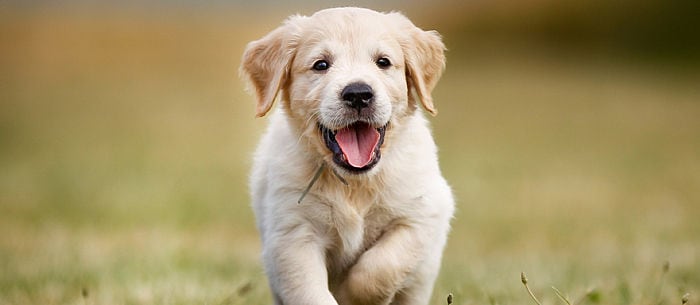Picture this: You just brought home a brand new puppy and suddenly your cute little ball of fur starts chewing on everything in sight. Welcome to the wonderful world of puppy teething! Like a child, your canine companion grows a set of baby teeth (well, puppy teeth), which will later be replaced by a permanent set of adult teeth. Here’s everything you need to know about your pet’s teething process.
When Will Your Puppy Get Adult Teeth?
Puppies are born without teeth, and their first set usually starts to come in when they are around three weeks of age. By the time your furry friend turns eight weeks old, she should have all 28 of her puppy teeth. These teeth are needle thin and razor sharp, so it’s important to watch your fingers when you’re playing with your feisty pup.
Join Care for free
These puppy teeth don’t stick around for long, however. Eventually this set will fall out so that your pet can begin to develop her adult teeth. “This usually happens at approximately ten to twelve weeks,” says Mario Bardouille, a professional dog trainer and behavior consultant in New York City. As is the case with children, your pet’s adult teeth will push out her puppy teeth — but don’t expect her to leave a lost tooth under her pillow! Usually, your pup will just swallow these teeth when they fall out.
This teething process should follow a certain pattern. First, your pet’s incisors and canines will come through, followed by her premolars. At this point, she will develop her adult molars. “The length of the process varies from dog to dog, depending on the dog’s breed,” says Bardouille. After about six months have passed, your pup should have 42 adult teeth.
Is your pet biting and gnawing on everything in her path during this teething process? Check out Puppy Teething — This Too Shall Pass for some helpful tips, and be sure to hire a dog sitter if you’re leaving your pup home alone so you don’t come back to find your favorite pair of shoes ruined.
What Will His Adult Teeth Look Like?
Although your pup’s teething process may seem very similar to your own, there are many differences between canine teeth and human teeth. Your dog will develop block-shaped teeth at the back of his mouth, which he will use for grinding, as well as sharper wedge-shaped premolars, which he will use for tearing and cutting. Your furry friend will also grow four pointed canines at the front of his mouth. These come in handy when he wants to grab a hold of his favorite toy!
What Happens if Her Teeth Don’t Come in Correctly?
Your vet will likely schedule a six-month checkup to make sure that all of your pet’s teeth have come through normally. If something doesn’t look right, she can take an x-ray to determine exactly what’s going on below your pet’s gum line. This allows her to address the problem before any of your furry friend’s adult teeth are damaged. Unfortunately, if your pet’s teeth don’t grow in properly, your vet may need to pull them out, says Bardouille.
What Can You Do to Keep Your Pet’s Teeth As Healthy As Possible?
You’re not the only one who can benefit from daily brushing! According to Bardouille, you should start brushing your dog’s teeth as soon as possible, so it becomes a routine. And you should try to make this experience a positive one. For instance, Bardouille recommends that you reward your dog afterwards. You can also ensure that your pet’s teeth stay healthy throughout his life by investing in professional cleanings every six to 12 months.
Want to freshen up your pup’s breath? Check out these 5 Homemade Dog Toothpaste Recipes.
Rebecca Desfosse is a freelance writer who specializes in parenting, family and pet care topics.
* This article is for general informational purposes only. It is not intended nor implied to be providing medical advice and is not a substitute for such advice. The reader should always consult a health care provider concerning any medical condition or treatment plan. Neither Care.com nor the author assumes any responsibility or liability with respect to use of any information contained herein.



